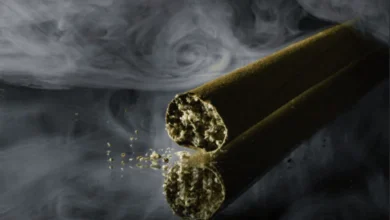Fun and Interesting Facts about Wines that will make you Amazed
If you look for the dictionary meaning or definition of wine, then it would go like ‘ferment grape juice’ or an alcoholic drink made from grapes. Fermentation happens when grape sugars are utilized by yeast and converted into carbon dioxide and alcohol. Wine is the most sophisticated drink in the family of alcoholic beverages. It has several different varieties like; red wine, white, sparking, and many others. The average content of alcohol in the wine is 14% or less.
While other members of alcoholic drinks are casually consumed, wine has a celebratory touch to it. When you pop a bottle of champagne after closing a deal in the office or gift a bottle of sherry on any achievement, all come with the sophistication of wine. It is also used in cooking and religious rites. There are several wine references in the religious scripture of many religions.
How is Wine Made?
There is no one kind of wine. It is a large family of drinks that vary significantly in color, taste, scent, and ingredients used. Depending on the type of wine, the processing can vary. In addition to that, the element may be the same, but the resulting wines are different. Its difference is dependent on processing. However, the basic process is the same. The following stages are involved when it comes to winemaking.

Picking: Wine is grapes-based; thus, the grapes are required. This acts as raw material and marks the beginning of winemaking. Picking or harvesting is the collection of grapes from the vineyard. It has to be done when the grapes are ripe. Hand or manual harvesting is preferred over mechanical as delicate vines get damaged.
Crushing: grapes make their way to the winery where the rotten or ripen fruit is separated. The good ones are then crushed and pressed. Crushing in old times was done by stomping called the harvest dance. The step is done mechanically now. It ensures quality and longer shelf life of wine.
Pressing: mechanical pressing is a step that is similar to crushing. Sometimes they are often regarded as the same. The timing of the press is crucial, depending on the kind of wine. In white wine, it is done immediately after crushing. This separates the skin of grapes, which gives color to the wine. In white wine, the color is not required. However, in red wine, pressing it delayed because coloring agents of the skin are needed.
Fermenting: this step is where the magic happens. The known strains of yeast are introduced in the wine, and fermentation takes place in closed chambers. It can last for twelve-day to months, depending upon the requirement. It can continue until all the sugar is converted. The wine gets a sweet taste when the fermentation is stopped before all the sugar is converted into alcohol.
Clarifying: it is the removal of residue and debris left behind after the winemaking process is completed. It is done by transferring the wine from one vessel to another while the sediments remain. Sometimes filters and added substances are also used to clarify the wine.
Aging and filling: the last step for the wine is further aging or bottling. Depending on the various wine is bottled immediately or kept in barrels for further aging. Aging can also happen inside the bottle. Nonetheless, the result is a good quality wine.
Wine drinking cultures around the world

Winemakers and drinkers are spread along with the globe. With their history and culture, they add uniqueness and peculiarity to wine drinking. Some countries have old roots of wine, and some are rather new in enjoying its deliciousness.
France: it is one of the biggest producers and consumers of wine. As a tradition, babies of France are introduced to wine early. They taste the wine before even drink their mothers’ milk.
Argentina: Wine is not a royal drink that is used to flaunt wealth. In Argentina, Wine is the friend of common men. It is often promoted and sold alongside pizza.
Georgia: the country with the dense association and elaborated wine history has several wine toasts. In formal events and feasts, the toast is made by a professional toastmaster that can last a very long time.
Intriguing facts about wine
The oldest bottle of wine: a long, rich history
Human’s love for wine goes a long way back, and it is centuries old. There are references in ancient scriptures and paintings. These references are spread across the globe. So how old history is?
The oldest wine bottle modern civilization ever found belongs to the 4th century. It is almost 1600 years old. It was located on one of the Roman excavation sites in Germany. If you are curious about the content, then we are as unsure as you are. The bottle remains sealed to the date. Scientists are unaware of how is content will react to exposure. Better to keep the lid on the years-old wine legacy.
The ceremonious wine tasting
In addition to being celebratory, wine drinking is a ceremonious affair. People indulge in elaborated wine tasting events around the world. The name can be misleading because describing a wine depends on 80% on smell. Overall there are five S of wine tasting see, swirl, smell, sip, and savor. It is an amalgam of using all senses to know what it tastes likes. The whole process also involves understanding the variety of grapes used, mouth-feel, and the body of the wine.
Conclusion
Wine is good but Alcohol Consumption is not good. If you somehow end up in the clutches of Alcohol then know that Ambien addiction treatment is always available for you to avail.






